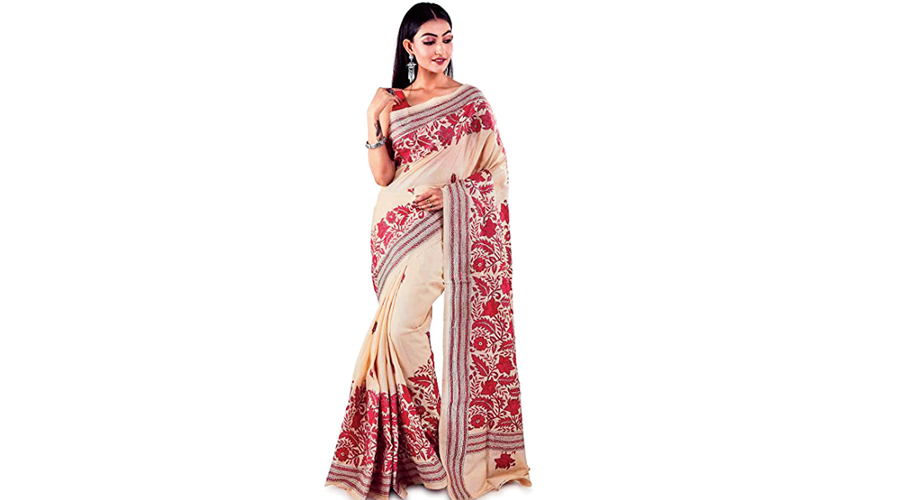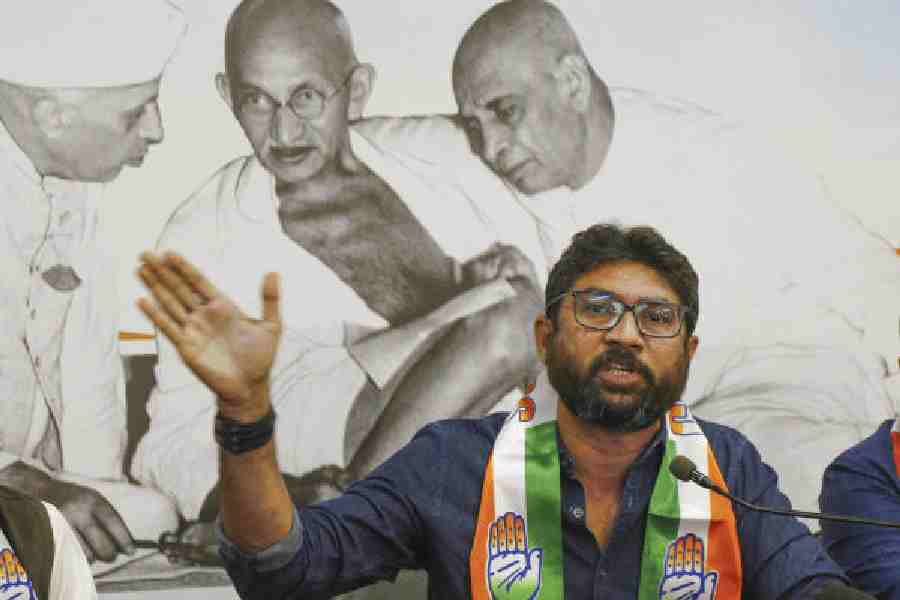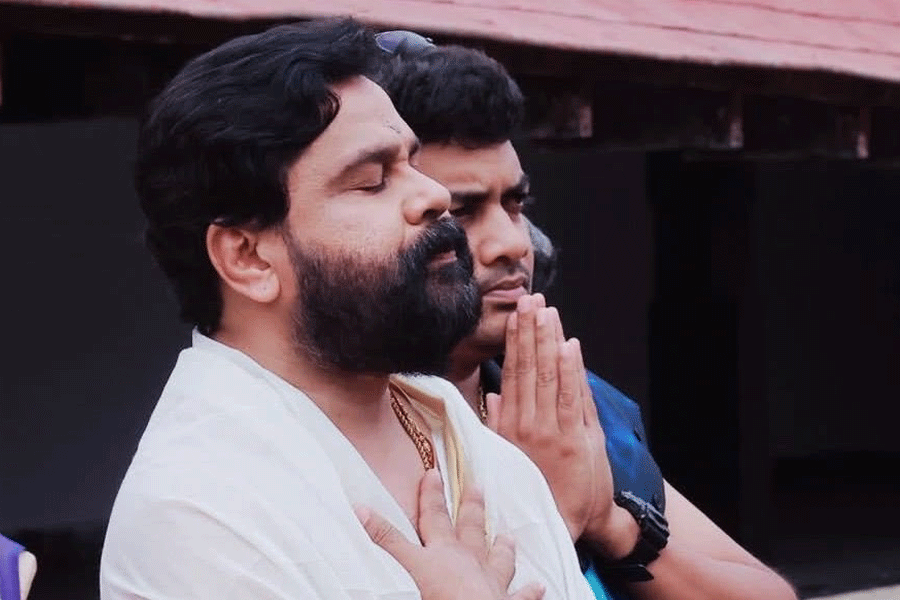Mukaish, also known as badla or fardi ka kaam. This craft comes from Lucknow. Metallic wires are used with great finesse to create dazzling mukaish pieces. The wires are stretched, passed through fire, and then beaten down with small hammers to be embroidered on to the fabric. The embroidery done, the fabric is stretched flat on the floor, and glass bottles are used to flatten the pattern. This technique also leads to polishing the tiny mukaish stars/dots. Usually mukaish is paired with chikankari, but on its own, it is a dazzling craft, which, unfortunately, is dwindling.
Zardozi, the regal one. Zardozi is used extensively for wedding attires and special occasion wear. The embroidery patterns are opulent. Metallic threads, sequins, beads, stones and pearls are used to bring zardozi to life. Varied techniques and embroidery styles are combined together to make heavy luxurious pieces.
Convent embroidery stands out among delicate things. It was brought to India by Belgian nuns and practised in many convents. The stitch used is a fine petit point, like a cross stitch and sometimes also satin stitch, and french knots for accents. Mostly one can see convent work on net fabrics. It takes long to complete a single piece and is justifiably expensive.
Gara, one of the most stunning and sought after embroideries. As the story goes, Parsi traders brought back with them this embroidery from China. The motifs range from scenery to nature: flowers, roosters, pagodas, women, men, sparrows, dragons and the sun. The kind of stitches used for gara include satin, french knot and stem. Only a skilled hand can execute this work, as this involves mixing of threads for colour shading. Exclusive, and expensive.
Gota patti is the famous hand embroidery from Rajasthan. Tiny leaf like motifs are cut out of gold or silver coloured zari ribbons, and then made into elaborate patterns by the securing of the edges of these leaves (patti) on to the base fabric. The base varies from chiffons, crepes, georgettes to pure silk and tussar. Some designers have also done this work on kota and cotton. Popular motifs include paisleys, peacocks, flowers and geometrical patterns.
Kantha started out as “recycling” in homes in rural Bengal. Old saris or dhotis were cut and layered and held together by running stitch, to be made into quilts. The new age kantha uses motifs from daily life, flora and fauna and nature-inspired scenes with the same running stitch. This has become extremely popular, and can be seen on garments, home furnishings, bags, shoes, the works, not only in Bengal.
Shubha nababarsha!
The columnist speaks her mind on everything about fashion. Contact: sanikakakirde@gmail.com










